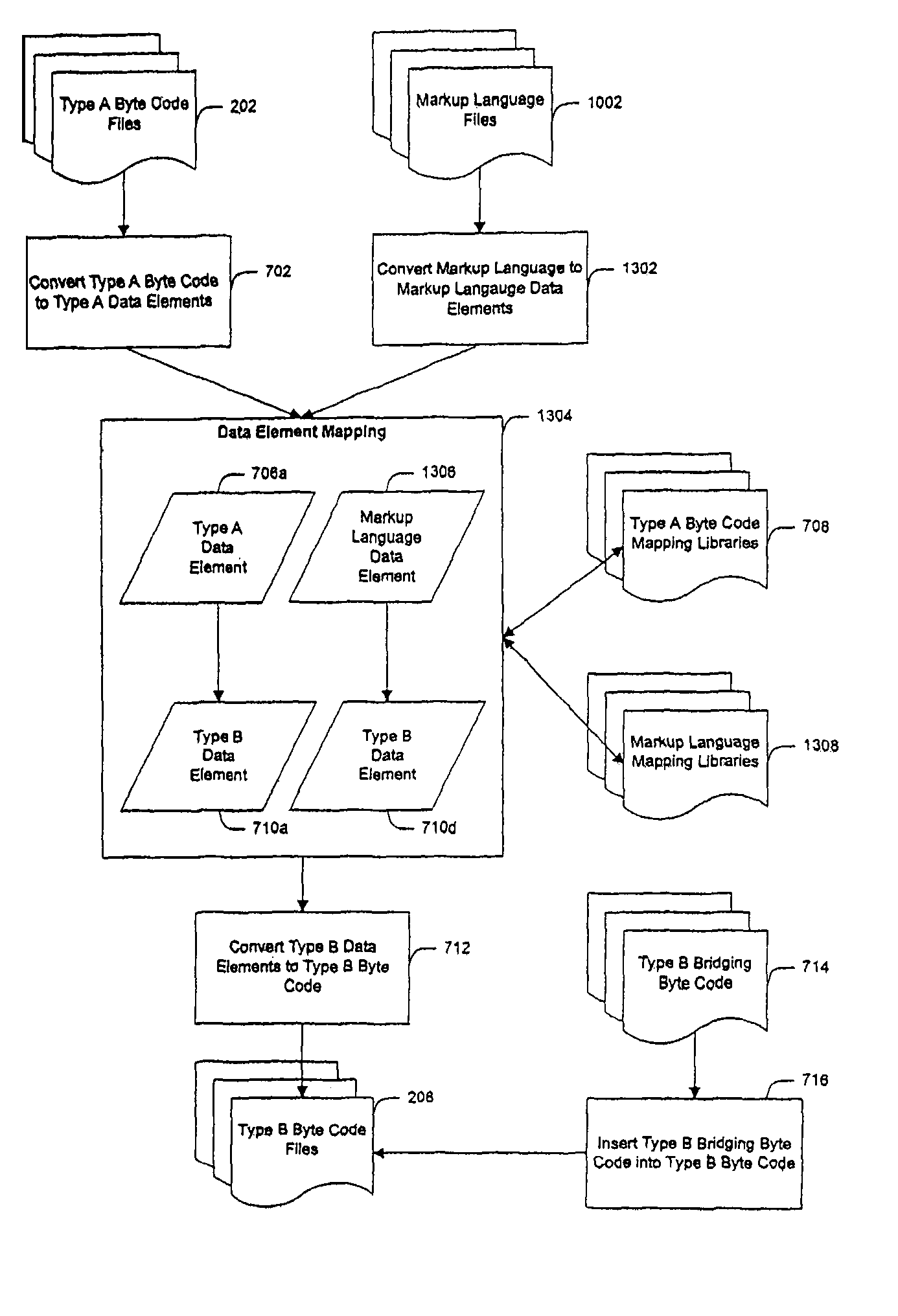System and method for creating target byte code
a target and byte code technology, applied in the field of computer code, can solve the problems of high dependency, inability to easily execute byte code of one type by a byte code interpreter of another type, inability to efficiently convert to byte code of another type, etc., and achieve the effect of facilitating efficient lookup and mapping of data elements
- Summary
- Abstract
- Description
- Claims
- Application Information
AI Technical Summary
Benefits of technology
Problems solved by technology
Method used
Image
Examples
Embodiment Construction
[0055]The present invention is directed toward a system and method for converting data of a first type into data of a second type. More specifically, according to one embodiment of the invention, a byte code converter is provided for a computer system, allowing a user or program to convert byte code of a first type and related markup language into byte code of a second, different type.
[0056]For example, according to one embodiment of the invention, byte code files and markup language files that contain references to data and objects in the compiled byte code are received. At least a portion of the compiled byte code is converted into one or more intermediate data structures. At least a portion of the markup language files are similarly converted into one or more object graph structures. The byte code converter can parse and examine these intermediate structures created from the original byte code and markup language, and map data elements from both to new byte code data elements of ...
PUM
 Login to View More
Login to View More Abstract
Description
Claims
Application Information
 Login to View More
Login to View More - R&D
- Intellectual Property
- Life Sciences
- Materials
- Tech Scout
- Unparalleled Data Quality
- Higher Quality Content
- 60% Fewer Hallucinations
Browse by: Latest US Patents, China's latest patents, Technical Efficacy Thesaurus, Application Domain, Technology Topic, Popular Technical Reports.
© 2025 PatSnap. All rights reserved.Legal|Privacy policy|Modern Slavery Act Transparency Statement|Sitemap|About US| Contact US: help@patsnap.com



